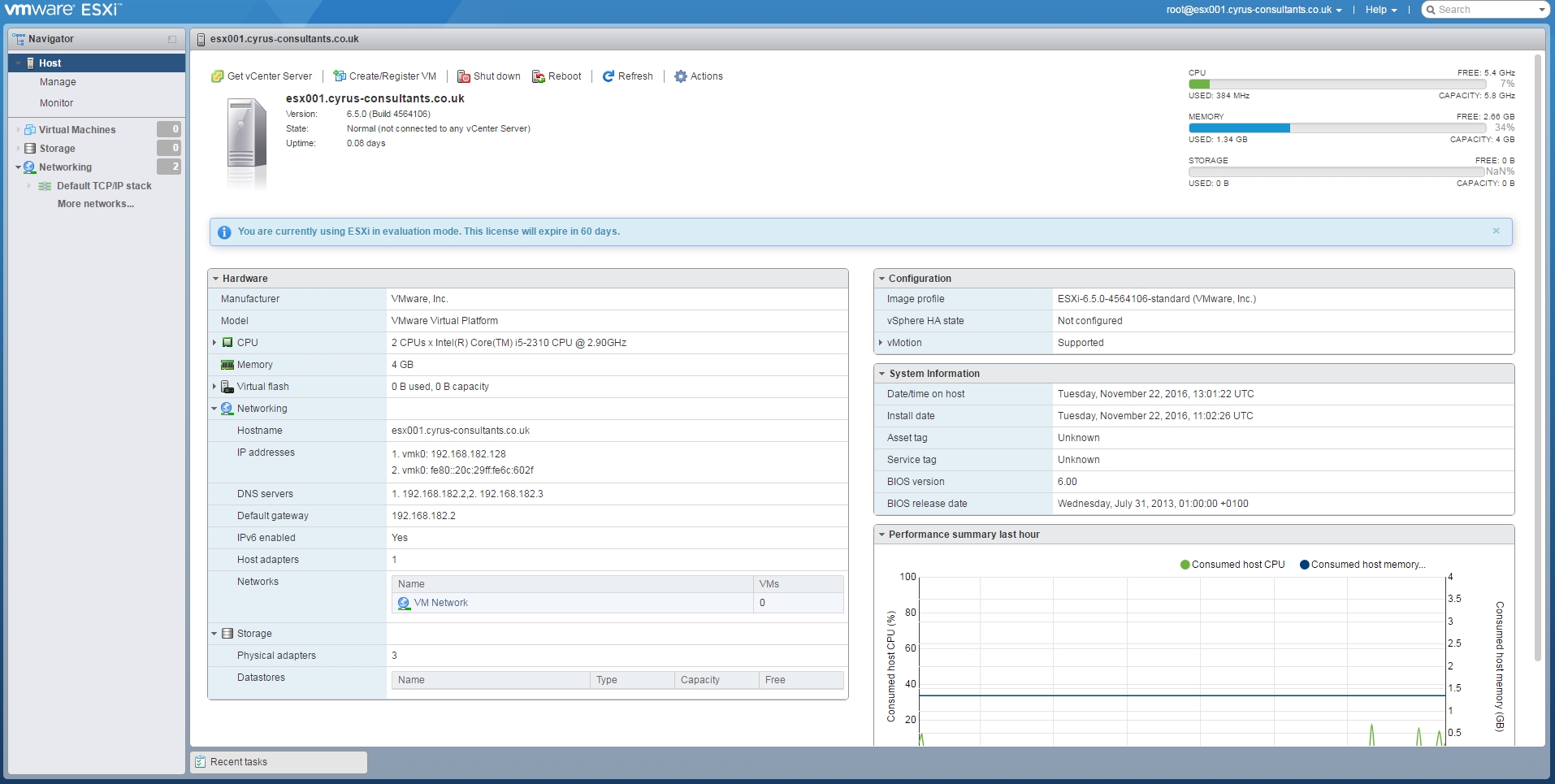If you're familiar with setting up and configuring VCSA (vCenter Server Appliance) over the web interface back in the 5.1 and 5.5 days:
https://vcenter.lab.local:5480
that UI option to configure your appliance is gone. Most of that configuration leg-work is now done up front, before the OVA is deployed, using a new web based install wizard, outlined nicely by Vladan Seget here, and by VMware here.
if your deployment of the appliance does go wrong and errors out, you'll want to go in with the vSphere Client and manually clean-up, deleting that VM from disk, so you can deploy the appliance again, without pesky 'already exists' errors
Utilize Direct Console User Interface (DCUI) and ESXi Shell to Troubleshoot, Configure, and Monitor ESXi Networking - buildVirtual May 27, 2014 admin Utilize Direct Console User Interface (DCUI) and ESXi Shell to Troubleshoot, Configure, and Monitor ESXi Networking. This screen is called the Direct Console User Interface (DCUI). The majority of the management is performed remotely from another computer using a web browser. The VMware vSphere Client based on the programming language C#. Is now deprecated, and not supported for use with managing and configuring a VMware vSphere Hypervisor (ESXi 6.5) host.
You'll get used to the new interface very quickly. Pes 21 option files. Why? It's the DCUI (Direct Console User Interface). Yep, they're standardizing their appliances on this simple interface, using F2 to get started, just as you would with the ESXi DCUI.
This example shows a FQDN of vcenter.lab.local Ae dil hai mushkil full movie. , of course, you'll want to substitute with your appropriate hostname.
Good idea to change stuff in the VCSA using the DCUI? Not really, especially the name, which will give you some fits when trying to log your browser back in to the vSphere Web Client, which is now simpler than ever. Instead, you'll be making changes through the vSphere Web Client, where you used to use your browser to log in like this:
https://vcenter.lab.local:9443/vsphere-client
but going forward, with vSphere 6.0, using now-supported IE, Chrome, or Firefox, it looks like this instead (no more port # to remember/bookmark)
https://vcenter.lab.local/vsphere-client
of course, there's a slight chance something will change a bit once vSphere 6.0 is generally available
VMware ESXi DCUI (Direct Console User Interface) Basics:
The first screen after ESXi installation or boot is called ESXi DCUI (Direct Console User Interface). In this blog we will discuss some basic configurations of ESXi using DCUI. Although all the configuration can be done using vSphere Client, vCenter or SSH login but ESXi DCUI is used when there is some network issue in all remote options or in case of first time Static IP Address allocation to management interface.
First of all, just after installing ESXi we see a screen with Yellow and Grey background showing VMware ESXi version, CPU/Memory resources and the link to download the vSphere Client to manage that host in below format:
http://hostname/
http://<IP Address>/
However you can also download the vSphere Client from VMware website (above links will also use the same VMware link to download).
There are only two options available, first “F2” to customize system/view logs and second “F12” to Shut Down/Restart ESXi host. To enter into the configuration page you need to press “F2” then it will ask for User Authentication (by default root user’s credential). Enter the password and it will open the System Customization page.
ESXi System Customization:
System Customization page provides the following features:
- Configure Password
- Configure Lockdown Mode
- Configure Management Network
- Restart Management Network
- Test Management Network
- Network Restore Options
- Configure Keyboard
- Troubleshooting Options
- View System Logs
- View Support Information
- Reset System Configuration

Features Details:

Modifying the root password is very simple, just select Configure Password and press Enter. It will ask for Old & New passwords to change the password. Enter the required details then press Enter.
Lockdown Mode is a security feature that prevents user to perform operations against the ESXi host directly. This feature is disabled by-default and only available on ESXi hosts that have been added to vCenter Server.
The only way to save her is to slay sixteen Colossi. Explore expansive landscapes and seek out each gigantic beast in its own natural habitat. Armed with only a sword, a bow, each Colossus presents a unique challenge to test your wits, determination, and skill. Shadow of the Colossus is an epic adventure on a scale unlike anything else. Shadow of colossus ps3 download.
To configure Hostname, IP Address, DNS use Configure Management Network option and don’t forget to restart the management network as soon as you finished the network configurations. You can also Test the Management Network by entering the IP addresses the Gateway or other servers like NTP.
In case of some issue in existing network configuration or you want to change the entire network configuration of ESXi host, VMware ESXi gives you Network Restore options.
If you have chosen the wrong Keyboard layout during ESXi installation, Don’t worry you can change it any time using Configure Keyboard.
Troubleshooting Options facilitates you to enable or disable ESXi Shell and SSH, In addition to that you can also configure the timeouts for Shell, SSH and ESXi DCUI.
Esxi Exit Console
You can also see the various system logs along with support information.
And last but not least, if everything seems to be messed up and not under control. At this instant you can factory reset the ESXi hypervisor. As a result it will remove all the configurations including management IP address on ESXi host. But in production environment never ever try to use this option as it may impact your production.
Esxi Console Commands
Thanks!!





